 W
WThe Ambraser Heldenbuch is a 16th-century manuscript written in Early New High German, now held in the Austrian National Library. It contains a collection of 25 Middle High German courtly and heroic narratives along with some shorter works, all dating from the 12th and 13th centuries. For many of the texts it is the sole surviving source, which makes the manuscript highly significant for the history of German literature. The manuscript also attests to an enduring taste for the poetry of the MHG classical period among the upper classes.
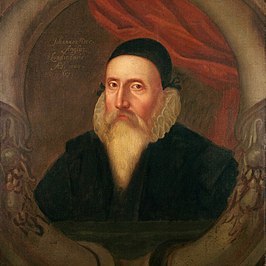 W
WThe Book of Soyga, also titled Aldaraia, is a 16th-century Latin treatise on magic, one copy of which was owned by the Elizabethan scholar John Dee. After Dee's death, the book was thought lost until 1994, when two manuscripts were located in the British Library and the Bodleian Library, under the title Aldaraia sive Soyga vocor, by Dee scholar Deborah Harkness. The Sloane MS 8 version is also described as Tractatus Astrologico Magicus, though both versions differ only slightly.
 W
WThe Cancioneiro de Elvas is one of the four Renaissance songbooks of Portuguese music from the 16th century - along with the Lisbon Songbook, the Belém Songbook, and the Paris songbook. It is one important source of secular music from the Iberian Renaissance.
 W
WThe Codex Bodley is an important pictographic manuscript and example of Mixtec historiography. It was named after the colloquial name of the Bodleian Library, where it has been stored since the 17th century.
 W
WThe Codex Leicester is a collection of scientific writings by Leonardo da Vinci. The Codex is named after Thomas Coke, later credited to Earl of Leicester, who purchased it in 1719. The manuscript currently holds the record for the second highest sale price of any book, as it was sold to Bill Gates at Christie's auction house on 11 November 1994 in New York for US$30,802,500
 W
WThe Codex Trivulzianus is a manuscript by Leonardo da Vinci that originally contained 62 sheets, but today only 55 remain. It documents Leonardo's attempts to improve his modest literary education, through long lists of learned words copied from authoritative lexical and grammatical sources. The manuscript also contains studies of military and religious architecture.
 W
WThe Commentariolus is Nicolaus Copernicus's brief outline of an early version of his revolutionary heliocentric theory of the universe. After further long development of his theory, Copernicus published the mature version in 1543 in his landmark work, De revolutionibus orbium coelestium.
 W
WThe Corpus Reformatorum, is the general Latin title given to a large collection of Reformation writings. This collection, which runs to 101 volumes, contains reprints of the collected works of John Calvin, Philip Melanchthon, and Huldrych Zwingli, three of the leading Protestant reformers. Texts in the CR are written in either Latin, French or German.
 W
WThe Cover dale Bible, compiled by Myles Coverdale and published in 1535, was the first complete Modern English translation of the Bible, and the first complete printed translation into English. The later editions published in 1537 were the first complete Bibles printed in England. The 1537 folio edition carried the royal licence and was therefore the first officially approved Bible translation in English. The Psalter from the Coverdale Bible was included in the Anglican Book of Common Prayer beginning in 1662, and in all editions of the Episcopal Book of Common Prayer until 1979.
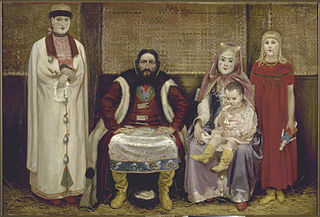 W
WDomostroy is a 16th-century Russian set of household rules, instructions and advice pertaining to various religious, social, domestic, and family matters of the Russian society. Core Domostroy values tended to reinforce obedience and submission to God, Tsar and Church. Key obligations were fasting, prayer, icon veneration and the giving of alms.
 W
WEpítome de la conquista del Nuevo Reino de Granada is a document of uncertain authorship, possibly (partly) written by Spanish conquistador Gonzalo Jiménez de Quesada between 1548 and 1559. The book was not published until 1889 by anthropologist Marcos Jiménez de la Espada in his work Juan de Castellanos y su Historia del Nuevo Reino de Granada.
 W
WEssayes: Religious Meditations. Places of Perswasion and Disswasion. Seene and Allowed (1597) was the first published book by the philosopher, statesman and jurist Francis Bacon. The Essays are written in a wide range of styles, from the plain and unadorned to the epigrammatic. They cover topics drawn from both public and private life, and in each case the essays cover their topics systematically from a number of different angles, weighing one argument against another. While the original edition included 10 essays, a much-enlarged second edition appeared in 1612 with 38. Another, under the title Essayes or Counsels, Civill and Morall, was published in 1625 with 58 essays. Translations into French and Italian appeared during Bacon's lifetime.
 W
WFalnama is a book of omens used by fortune tellers in Iran and Turkey during the 16th and 17th centuries. Individuals seeking insight into the future would engage in a series of purification rituals, turn to a random page in the Falnama, and interpret the text and drawings thereon for good or ill. Falnama manuscripts were primarily created during the 16th and 17th centuries as the Islamic calendar was approaching the year 1000.
 W
WFreydal is an uncompleted illustrated prose narrative commissioned by the Holy Roman Emperor, Maximilian I in the early 16th century. It was intended to be a romantic allegorical account of Maximilian's own participation in a series of jousting tournaments in the guise of the tale's eponymous hero, Freydal. In the story, Freydal takes part in the tournaments to prove that he is worthy to marry a princess, who is a fictionalised representation of Maximilian's late wife, Mary of Burgundy.
 W
WThe Guatemala City Choirbooks form a collection of the Roman Catholic liturgical music used in the Cathedral of Guatemala City in the 16th and early 17th centuries. During that time, the cathedral was an important center of Spanish culture in the Americas, with polyphonic music already in use in the 1540s. The choirbooks were copied and bound in 1602 by Gaspar Fernandes who was the cathedral's choirmaster and organist from 1599 until 1606. Several of the books are still in existence and held in the archives of the current Guatemala City cathedral.
 W
WThe Hamzanama or Dastan-e-Amir Hamza narrates the legendary exploits of Amir Hamza, or Hamza ibn Abdul-Muttalib, an uncle of Muhammad who was a historical figure, though most of the stories are extremely fanciful, "a continuous series of romantic interludes, threatening events, narrow escapes, and violent acts". The Hamzanama chronicles the fantastic adventures of Hamza as he and his band of heroes fight against the enemies of Islam. The stories, from a long-established oral tradition, were written down in Persian, the language of the courts of the Persianate world, in multiple volumes presumably in the era of Mahmud of Ghazni. In the West the work is best known for the enormous illustrated manuscript commissioned by the Mughal Emperor Akbar in about 1562. The text augmented the story, as traditionally told in dastan performances. The dastan about Amir Hamza persists far and wide up to Bengal and Arakan (Burma), as the Mughals controlled those territories. The longest version of the Hamzanama exists in Urdu and contains 46 volumes in approximately over 45,000 pages.
 W
WThe Heptaméron is a collection of 72 short stories written in French by Marguerite de Navarre (1492–1549), published posthumously in 1558. It has the form of a frame narrative and was inspired by The Decameron of Giovanni Boccaccio. It was originally intended to contain one hundred stories covering ten days like The Decameron, but at Marguerite’s death it was completed only as far as the second story of the eighth day. Many of the stories deal with love, lust, infidelity, and other romantic and sexual matters. One was based on the life of Marguerite de La Rocque, a French noblewoman who was punished by being abandoned with her lover on an island off Quebec.
 W
WThe Kitab salat al-sawai is widely considered the first book in Arabic printed using moveable type. It was a book of hours intended for Arabic-speaking Christians and presumably commissioned by Pope Julius II. It had 120 un-numbered pages. Some eight or nine copies are known to survive.
 W
WThe Letter-Books of the City of London are a series of fifty folio volumes in vellum containing entries of the matters of in which the City of London was interested or concerned, beginning in 1275 and concluding in 1509. The volumes are part of the collection of the City of London Records Office, and are kept in the London Metropolitan Archives.
 W
WThe Libro de los Epítomes is a catalogue summarising part of the library of around 15-20,000 books which Ferdinand Columbus assembled in the early sixteenth-century in an effort to create a library of every book in the world. The manuscript is currently part of the Arnamagnæan Manuscript Collection.
 W
WLocationes mansorum desertorum is a manuscript of Nicolaus Copernicus, written between 1516–1521. It is from ledgers handwritten by Copernicus when he was an economic administrator in Warmia.
 W
WLancelot de Casteau or de Chasteau or de Chestea, also known as Anseau de Chestea was the master chef for three prince-bishops of Liège in the 16th century: Robert de Berghes, Gérard de Groesbeek, and Ernest of Bavaria and the author of a cookbook, the Ouverture de cuisine, often considered the first cookbook to go beyond medieval recipes and to codify haute cuisine.
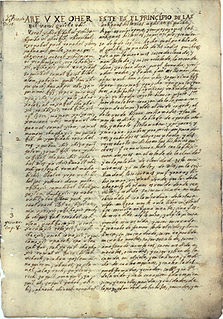 W
WPopol Vuh is a text recounting the mythology and history of the Kʼicheʼ people, one of the Maya peoples, who inhabit the Guatemalan Highlands, Mexican Chiapas, Campeche and Quintana Roo states, and areas of Belize.
 W
WThe Ramírez Codex is a post-conquest codex from the late 16th century entitled Relación del origen de los indios que hábitan esta Nueva España según sus Historias.
 W
WThe Shahnameh of Shah Tahmasp or Houghton Shahnameh is one of the most famous illustrated manuscripts of the Shahnameh, the national epic of Greater Iran, and a high point in the art of the Persian miniature. It is probably the most fully illustrated manuscript of the text ever produced. When created, the manuscript contained 759 pages, 258 of which were miniatures. These miniatures were hand painted by the artists of the royal workshop in Tabriz under rulers Shah Ismail I and Shah Tahmasp I. Upon its completion, the Shahnameh was gifted to Ottoman Sultan Selim II in 1568. The page size is about 48 x 32 cm, and the text written in Nastaʿlīq script of the highest quality. The manuscript was broken up in the 1970s and pages are now in a number of different collections around the world.
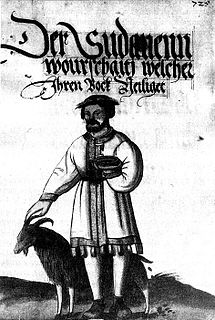 W
WThe so-called Sudovian Book was an anonymous work about the customs, religion, and daily life of the Old Prussians from Sambia. The manuscript was written in German in the 16th century. The original did not survive and the book is known from later copies, transcriptions and publications. Modern scholars disagree on the origin and value of the book. Despite doubts about its reliability, the book became popular and was frequently quoted in other history books. Much of the Prussian mythology is reconstructed based on this work or its derivatives.
 W
WThe History of Travel is a collection of travel writings published and printed by Richard Jugge. It's full title being The history of trauayle in the VVest and East Indies, and other countreys lying eyther way, towardes the fruitfull and ryche Moluccaes : As Moscouia, Persia, Arabia, Syria, Ægypte, Ethiopia, Guinea, China in Cathayo, and Giapan : vvith a discourse of the Northwest passage. The work records exploration narrative's by sailors and explorers during the Age of exploration.
 W
WTheuerdank is a poetic work composed by the Holy Roman Emperor, Maximilian I, (1486-1519) in German which tells the fictionalised and romanticised story of his journey to marry Mary of Burgundy in 1477. The published poem was accompanied by 118 woodcuts designed by the artists Leonhard Beck, Hans Burgkmair, Hans Schäufelein and others. Its newly designed blackletter typeface was influential.
 W
WTreatise on Relics or Tract on Relics is a theological book by John Calvin, written in 1543 in French about the authenticity of many Christian relics. Calvin harshly criticizes the relics' authenticity, and suggests the rejection of relic worship. The book was published in Geneva, and was included in the Index Librorum Prohibitorum.
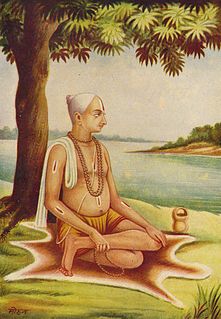 W
WVinayaPatrika is a devotional poem composed by the 16th-century Indian poet, Goswami Tulsidas, containing hymns to different Hindu deities especially to Lord Rama in extreme humility (Vinaya).
 W
WThe Vocabulario trilingüe is an anonymous 16th-century manuscript copy of the second edition (1516) of Antonio de Nebrija's Spanish-Latin dictionary, which has been expanded by the addition of Nahuatl translations of its entries in red ink. The manuscript is currently held by the Newberry Library in Chicago, Illinois, United States.
 W
WDer Weisskunig or The White King is a chivalric novel and thinly disguised biography of the Holy Roman Emperor, Maximilian I, (1486–1519) written in German by Maximilian and his secretary between 1505 and 1516. Although not explicitly identified as such in the book, Maximilian appears as the "young" White King, with his father Frederick III represented as the "old" White King.
 W
WYny lhyvyr hwnn was the first book to be printed in the Welsh language. It was written by Sir John Price of Brecon, a nobleman and secretary of the Council of Wales and the Marches. He was one of the most important Welsh manuscript collectors of his time, after the dissolution of the monasteries. The publication's main objective was to correct the lack of material, and specifically, the lack of religious material, available in the Welsh language. As Yny lhyvyr hwnn was a humanist venture with the aim to put into print the literary heritage of Wales, Price also included an ABC section and the first Welsh printed alphabet. A record of English, European and Welsh Saints was added, as well as a monthly forecast for agricultural purposes. The last section of the pamphlet is a comprehensive religious text. These subjects dominated many early Welsh publications. Yny lhyvyr hwnn was printed in London by Edward Whitchurch in 1546.